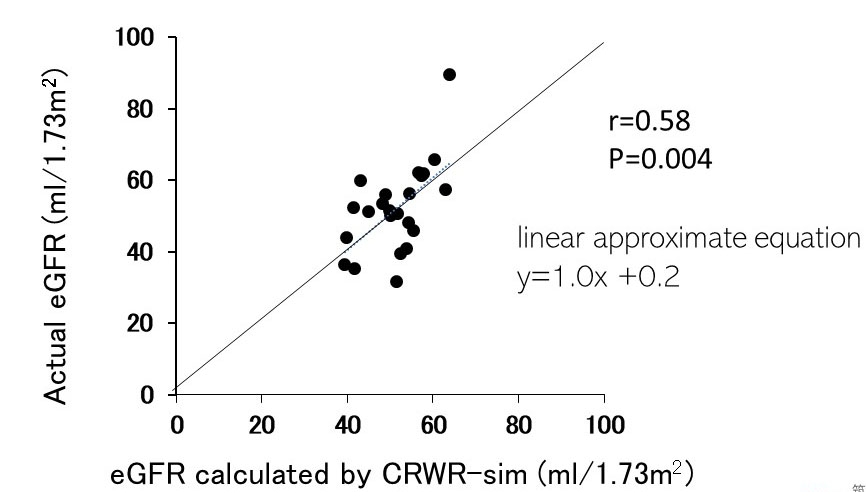Cortex Recipient Weight Ratio is a Predictor for Short-Term Renal Function After Living Donor Kidney Transplant
1Gastrointestinal and Hepatobiliary Pancreatic Surgery, University of Tsukuba, Tsukuba, Japan, 2Nephrology, University of Tsukuba, Tsukuba, Japan, 3Urology, University of Tsukuba, Tsukuba, Japan, 4Nursing, University of Tsukuba, Tsukuba, Japan
Meeting: 2022 American Transplant Congress
Abstract number: 1713
Keywords: Glomerular filtration rate (GFR), Kidney transplantation, Living donor
Topic: Clinical Science » Kidney » 42 - Kidney Living Donor: Selection
Session Information
Session Name: Kidney Living Donor: Selection
Session Type: Poster Abstract
Date: Tuesday, June 7, 2022
Session Time: 7:00pm-8:00pm
 Presentation Time: 7:00pm-8:00pm
Presentation Time: 7:00pm-8:00pm
Location: Hynes Halls C & D
*Purpose: Renal function early after living donor kidney transplant (LDKT) depends on “nephron mass” in the renal graft, and “nephron mass” can be quantified as cortex volume by CT volumetry. In this study, the cortex recipient weight ratio (CRWR) was defined as the cortex weight/recipient weight, and we evaluated whether it predicts early allograft function.
*Methods: Patients who received LDKT from December 2013 to August 2021 were enrolled (total of 80 patients). Patients were classified into developmental cohort (n =57) and validation cohort (n =23) by the time the patient received transplant. The cortex volume of donor kidney was quantified by CT volumetry (Synapse Vincent, Fujifilm). In developmental cohort, we calculated the correlation coefficient between eGFR (1, 6, and 12 months) and the size mismatch parameters including CRWR. Further, using CRWR, we defined formula to calculate renal function 1 months posttransplant. By multivariate analysis, the risk factors for low renal function at 1 month posttransplant (low 25 percentile of eGFR) was investigated. Further, using validation cohort, the validity of the formula at 1 months posttransplant was examined.
*Results: Correlation coefficient was the highest for CRWR among the size mismatch parameters (1 month r=0.62 p<0.001; 6 months r=0.48, p<0.001; 12 months r=0.45, p=0.002), and eGFR was calculated by a liner equation (eGFR at 1 month=17.7 x CRWR + 20.9). By multivariate analysis, CRWR was the only independent risk factor for low renal function at 1 month (Odds ratio =0.04, per 1.0 up, p=0.008). In validation cohort, correlation efficient between anticipated eGFR at 1 month calculated from CRWR and actual eGFR was r=0.58 (p=0.004). Validity of this formula was confirmed by the following; actual eGFR=1.0 x anticipated eGFR +0.2.
*Conclusions: CRWR was the strongest parameter to predict early posttransplant renal function among the size mismatch parameters, and it can be applied in practical use for donor selection and for preventing waste of medical resources.
To cite this abstract in AMA style:
Takahashi K, Furuya K, Usui J, Kimura T, Fukuda S, Hoshi A, Yoshino T, Nishiyama H, Oda T, Yamagata K. Cortex Recipient Weight Ratio is a Predictor for Short-Term Renal Function After Living Donor Kidney Transplant [abstract]. Am J Transplant. 2022; 22 (suppl 3). https://atcmeetingabstracts.com/abstract/cortex-recipient-weight-ratio-is-a-predictor-for-short-term-renal-function-after-living-donor-kidney-transplant/. Accessed December 20, 2025.« Back to 2022 American Transplant Congress

